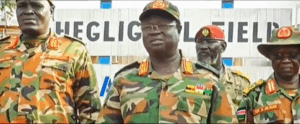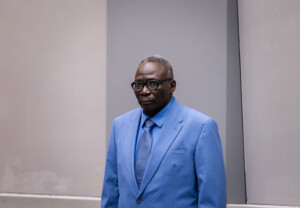OCHA: Haemorrhagic fever cases in Darfur reach 469
Between 29 August-27 November, 469 suspected cases of viral haemorrhagic fever (VHF), including 120 deaths, were reported in the five Darfur states, according to the Sudanese Ministry of Health.
The UN Office for the Coordination of Humanitarian Affairs (OCHA) in Sudan reported in its latest weekly bulletin that the outbreak has now spread to 27 localities in Sudan’s conflict-torn western region.
Between 29 August-27 November, 469 suspected cases of viral haemorrhagic fever (VHF), including 120 deaths, were reported in the five Darfur states, according to the Sudanese Ministry of Health.
The UN Office for the Coordination of Humanitarian Affairs (OCHA) in Sudan reported in its latest weekly bulletin that the outbreak has now spread to 27 localities in Sudan’s conflict-torn western region.
The highest number of reported cases is in West Darfur (296) followed by North Darfur (68) Central Darfur (68), South Darfur (23), and East Darfur (14).
The highest number of fatalities was recorded in West Darfur (90), followed by North Darfur (15), Central Darfur (12), East Darfur (two) and South Darfur (one).
Responses
The World Health Organisation (WHO) has supported vector control activities with larvicide interventions, reaching 6,268 families (40,800 people) in Ed Daein, capital of East Darfur, in the South Darfur localities of Tullus, Kass, Ed El Fursan, Buram, and El Sereif Beni Hussein in North Darfur.
A further 30,000 families (195,000 people) in South Darfur’s Tullus town and the Kass camps for the displaced were reached with integrated vector control activities conducted jointly by the Ministry of Health and the WHO. These activities are now ongoing in Buram, Ed Fursan and Nyala localities in the state. In addition, the WHO supported larvicide fogging and spraying assistance to more than 1,300 families (8,500 people) in El Sereif town, North Darfur.
In North Darfur, Doctors Without Borders/Médecins Sans Frontières (MSF) Spain and the WHO support a treatment centre in El Sereif locality.
MSF Switzerland is supports a treatment centre and two mobile clinics in the West Darfur Krendig and Kereinik camps for the displaced in Kereinik locality.
The UN Children’s Agency (Unicef) supported the Ministry of Health in West Darfur to reach 385,700 people on viral haemorrhagic fever prevention through local radio programmes. It supported national NGOs to conduct health education sessions in El Geneina and Kereinik localities.
Unicef has also supported health promotion activities in Zalingei, Azum, Bindisi, West Jebel Marra and Wadi Salih localities of Central Darfur.
Haemorrhagic fevers are endemic in many states of Sudan including Red Sea, Kassala, Gedaref, and South Kordofan, OCHA states. In 2012, sporadic cases of dengue fever and yellow fever co-infection were reported in Darfur, while no cases were reported in 2013. In 2014, however, a large scale dengue fever outbreak occurred in Red Sea (1,092 cases), North Darfur (132), South Darfur (48), West Darfur (24), South Kordofan (59), and Kassala (57).











 and then
and then